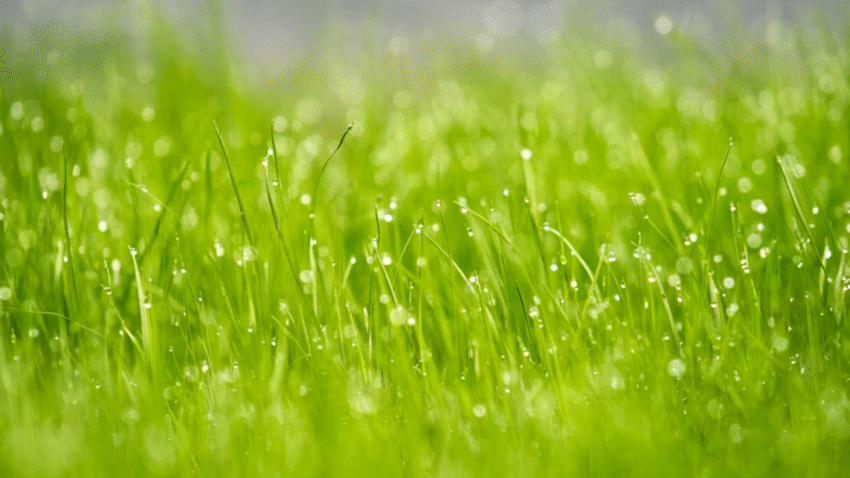Introduction
When autumn arrives, so do falling leaves—and while raking might feel like the only option, there’s a better, greener way. Learning how to mulch leaves on your lawn in autumn helps you turn a potential yard chore into free, natural fertilizer for your grass. Instead of bagging up leaves and sending them to the landfill, you can recycle them right into your soil. Mulched leaves add organic matter, improve soil health, and reduce the need for store-bought fertilizers. In this step-by-step guide, you’ll learn how to mulch leaves correctly, avoid common mistakes, and keep your lawn healthy all season long.
Why Mulching Leaves Matters for a Healthy Lawn
A thick blanket of whole leaves left on your lawn can smother grass, block sunlight, and lead to disease. But finely mulched leaves are a different story—they break down quickly, returning valuable nutrients to the soil.
When you mulch leaves into your lawn:
✅ You improve soil structure by adding organic matter.
✅ You naturally boost soil microbes and earthworm activity.
✅ You save money on lawn fertilizer.
✅ You reduce waste that would otherwise go to landfills.
Plus, mulching saves you time and effort compared to endless raking and bagging!
Step-by-Step Guide to Mulch Leaves on Your Lawn
1. Wait for Leaves to Cover Your Lawn Lightly
Don’t wait until you have mountains of leaves to tackle. The best time to mulch is when you have a thin to moderate layer—about 1–2 inches deep. If the layer is too thick, you may need to make multiple passes.
2. Use the Right Mower and Blade
Most standard lawn mowers can mulch leaves as long as they have a mulching blade or mulching kit.
✅ Mulching blades have a special shape that chops leaves into tiny pieces instead of just blowing them aside.
✅ If your mower doesn’t have a mulching blade, consider installing one—it’s a quick upgrade that makes a big difference.
3. Set Mower Height Correctly
Raise your mower to its highest or second-highest setting. This allows the mower to cut through the leaves efficiently without scalping your grass.
4. Mow Slowly, Making Multiple Passes if Needed
Mow over the leaves slowly, letting the blade chop them into small pieces. If your mower struggles, slow your walking pace and overlap your mowing rows by 50%.
You may need to make a second or third pass, especially if you have large leaves like oak or maple. The goal is for leaf pieces to be no bigger than a dime.
5. Check for Even Coverage
After mulching, look down at your grass. You should still see your grass blades poking up through the shredded leaves. If the mulch layer is too thick, it can smother the grass and block sunlight—go over it again to break it down further.
6. Water Lightly (Optional)
Mulched leaves break down faster when they’re slightly moist. If your lawn is dry, give it a light watering after mulching. This helps the leaf pieces settle into the turf and soil.
7. Repeat Weekly as Needed
Leaves often fall for weeks in autumn, so plan to mulch once a week or every few days until the trees are bare. Staying on top of leaf drop makes each mowing session quicker and easier.
Common Mistakes to Avoid
Mistake #1: Letting Leaves Pile Up Too Deep
Solution: Mulching works best with a light-to-moderate layer. If you have too many leaves, rake some away or make extra passes to shred them fully.
Mistake #2: Using Dull Mower Blades
Solution: Sharp blades chop leaves more effectively. Dull blades tear leaves, leaving large chunks that take longer to break down.
Mistake #3: Ignoring Uneven Clumps
Solution: After mulching, walk your yard. If you see clumps of leaf pieces, go over them again to distribute mulch evenly.
Mistake #4: Leaving Whole Leaves Untouched
Solution: Whole leaves left on your lawn can mat down, smothering your grass and causing fungal diseases. Always shred them!
Mistake #5: Skipping Fall Lawn Care
Solution: Mulching is a great start, but remember to feed your lawn if needed. Fall is prime time for root growth in many grass types.
Extra Lawn Care Tips & Hacks
✅ Use Mulched Leaves in Flower Beds: If you end up with more shredded leaves than your lawn can handle, scoop some into your garden beds. They make excellent mulch for perennials and shrubs, protecting roots over winter.
✅ Combine with Fall Fertilizer: Mulched leaves provide nutrients, but a balanced fall fertilizer can give your grass an extra boost for strong root growth.
✅ Keep Blades Sharp: Sharpen your mower blade every season to keep leaf mulch pieces small and tidy.
✅ Don’t Miss Our Related Guide: Read our step-by-step guide on how to feed your lawn in fall for even stronger roots and better spring green-up!
Conclusion
Mulching leaves on your lawn in autumn is one of the easiest ways to recycle nutrients, save time, and grow a healthier yard—without bagging or hauling leaves to the curb. By shredding leaves into dime-sized pieces, you feed your soil, reduce waste, and keep your grass strong through winter.
Remember: start when leaves form a light layer, use a sharp mulching blade, mow slowly in multiple passes, and make sure your grass blades still peek through the mulch. Bookmark this guide and use it every fall for a greener, thicker lawn that’s ready to bounce back beautifully in spring!
